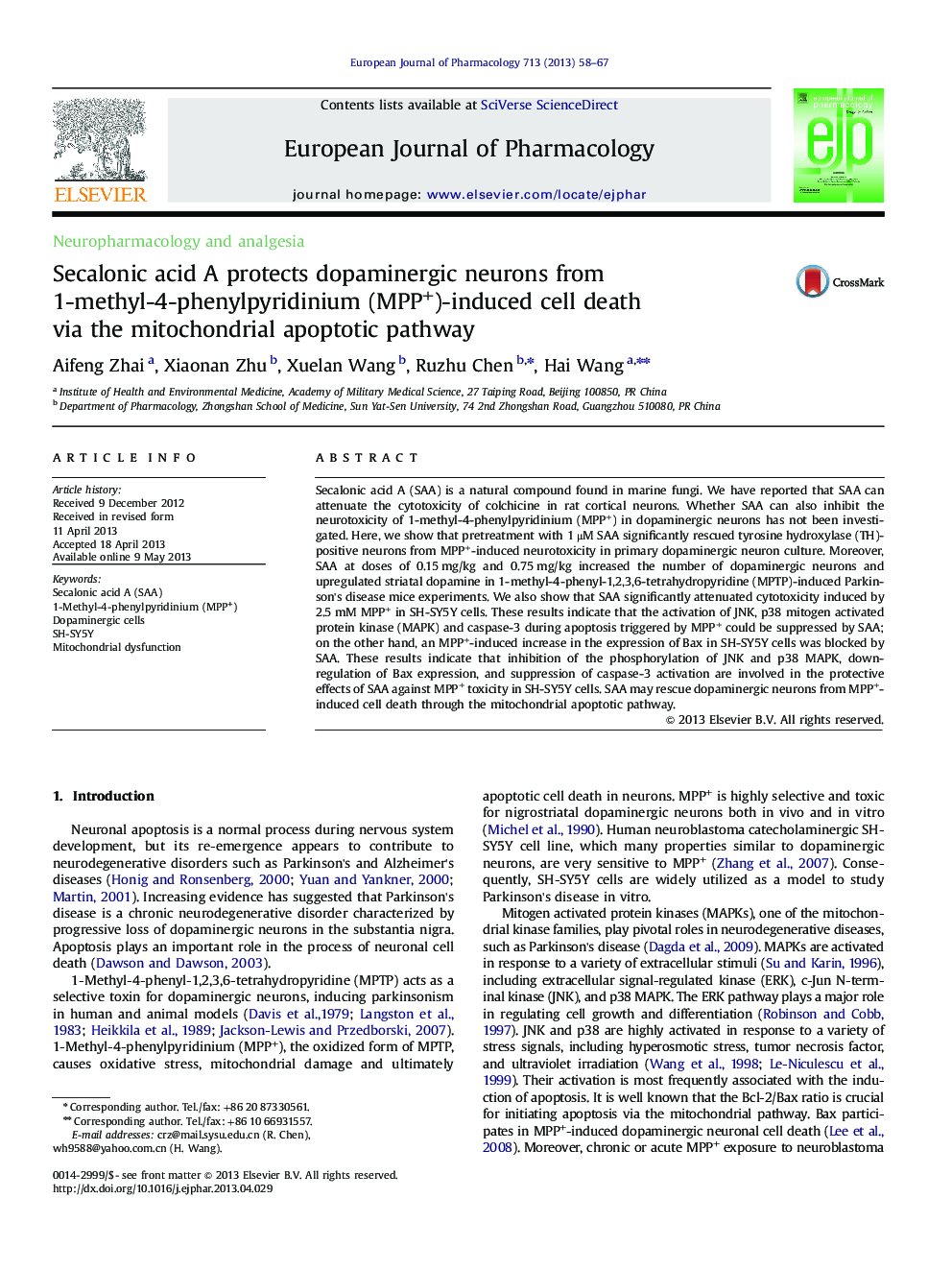| Article ID | Journal | Published Year | Pages | File Type |
|---|---|---|---|---|
| 5828504 | European Journal of Pharmacology | 2013 | 10 Pages |
Abstract
Secalonic acid A (SAA) is a natural compound found in marine fungi. We have reported that SAA can attenuate the cytotoxicity of colchicine in rat cortical neurons. Whether SAA can also inhibit the neurotoxicity of 1-methyl-4-phenylpyridinium (MPP+) in dopaminergic neurons has not been investigated. Here, we show that pretreatment with 1 μM SAA significantly rescued tyrosine hydroxylase (TH)-positive neurons from MPP+-induced neurotoxicity in primary dopaminergic neuron culture. Moreover, SAA at doses of 0.15 mg/kg and 0.75 mg/kg increased the number of dopaminergic neurons and upregulated striatal dopamine in 1-methyl-4-phenyl-1,2,3,6-tetrahydropyridine (MPTP)-induced Parkinson's disease mice experiments. We also show that SAA significantly attenuated cytotoxicity induced by 2.5 mM MPP+ in SH-SY5Y cells. These results indicate that the activation of JNK, p38 mitogen activated protein kinase (MAPK) and caspase-3 during apoptosis triggered by MPP+ could be suppressed by SAA; on the other hand, an MPP+-induced increase in the expression of Bax in SH-SY5Y cells was blocked by SAA. These results indicate that inhibition of the phosphorylation of JNK and p38 MAPK, down-regulation of Bax expression, and suppression of caspase-3 activation are involved in the protective effects of SAA against MPP+ toxicity in SH-SY5Y cells. SAA may rescue dopaminergic neurons from MPP+-induced cell death through the mitochondrial apoptotic pathway.
Related Topics
Life Sciences
Neuroscience
Cellular and Molecular Neuroscience
Authors
Aifeng Zhai, Xiaonan Zhu, Xuelan Wang, Ruzhu Chen, Hai Wang,
